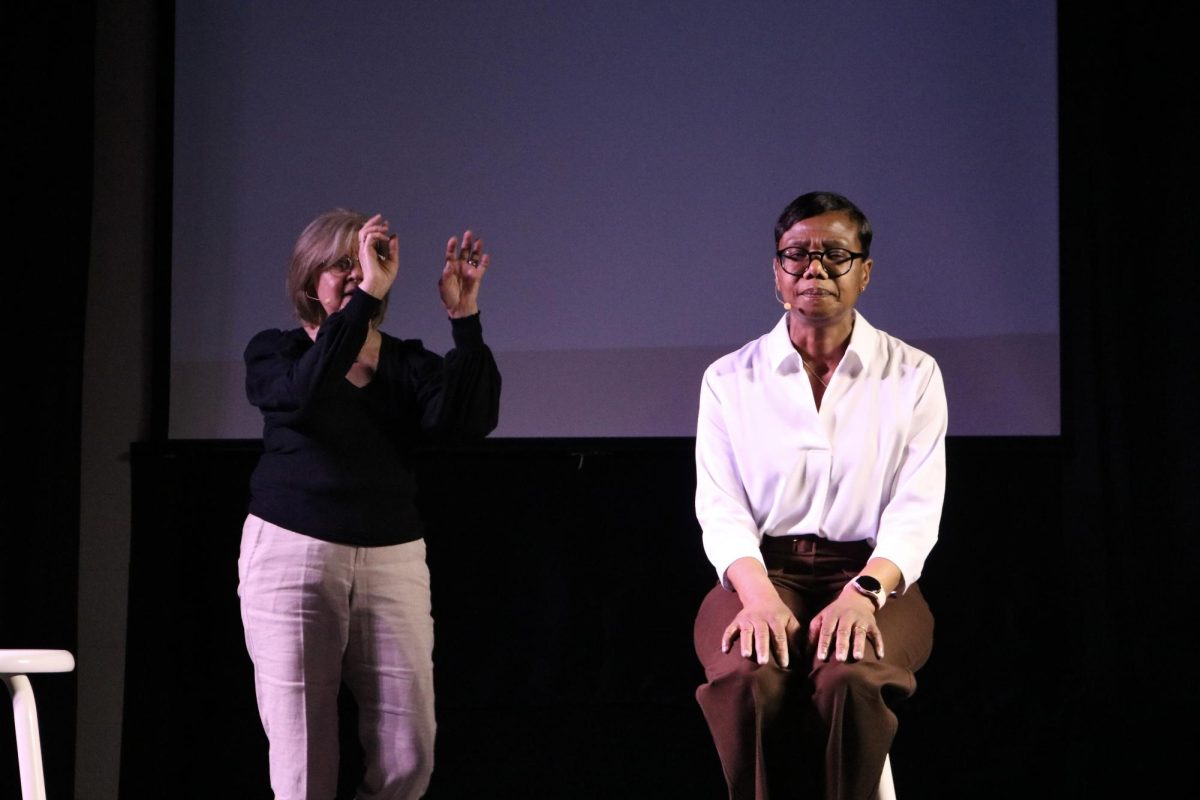
If you’ve been on the hunt for a cinematic masterpiece that includes incredible acting, a heart-wrenchingly beautiful plot and visually astonishing cinematography, look no further. The 2011 award-winning film “Hugo” is not simply a movie to be watched, but also one to be experienced, and what an incredible experience it is.
This historical drama is an adaption of the 2007 book “The Invention of Hugo Cabret” by Brian Selznick, originally inspired by the life of French filmmaker Georges Méliès and his collection of automata. The author describes the book as “not exactly a novel, not quite a picture book, not really a graphic novel, or a flip book or a movie, but a combination of all these things.” The visually inspiring book features over 200 pages of only drawn pictures and diagrams that make up over half the novel. “Hugo” adapts these pictures into beautiful cinematography, since the film relies heavily on the use of visuals. Oftentimes, it features scenes almost entirely made up of action with very little dialogue, accompanied by a beautiful soundtrack. Director Martin Scorsese filmed the movie in 3-D. Of course, this prospect instantly brings to mind cringe-worthy action films involving random objects being thrown at the screen. But fear not — the 3-D aspects only add to the childlike wonder the movie offers.
The film takes place in Paris in 1931, and revolves around 12-year-old orphan Hugo Cabret, who lives and works in Gare Montparnasse, a train station, with his alcoholic uncle. In the station, Hugo keeps an automaton once owned by his father. After his father’s death, he continued to repair it with stolen parts, believing the machine to contain a message from his father. While on the hunt for parts, toy store owner Georges catches him stealing and forces the boy to work in the store before he will return Hugo’s father’s notebook about the automaton. He meets George’s goddaughter Isabelle, to whom he shows the mysterious machine. She relays to Hugo how her godfather never allowed her to see a movie, while Hugo and his father shared a deep love of them. The rest of the film revolves around this curious automaton and the relationship of the characters to both it and each other. With so many mysteries uncovered during the movie, I will keep myself from retelling more of the plot.
“Hugo” features outstanding acting, and it boasts a very impressive cast, including Ben Kingsley, Asa Butterfield, Chloë Grace Moretz, Sacha Baron Cohen, Jude Law, Helen McCrory and Christopher Lee. Together, these actors and actresses bring to life a touching story about family, cinema, heartbreak and dreams. From the slightest glances to emotionally-charged arguments, the cast delivers beautiful performances that keep you enthralled in the life of this orphaned young boy.
The movie also received numerous awards and nominations. It won five Academy Awards and was nominated for six more, including Best Picture (won by “The Artist” that year). “Hugo” also went on to win two of the eight British Academy Film Awards it was nominated for, and one of three Golden Globes. Despite all this critical success, it didn’t do as well commercially. I hardly remember seeing advertisements for it, and it may have been overshadowed by other films released at the same time. In my own experience, the only reason I saw it in theaters was because my friend wanted to see it for her birthday.
Because of this lack of initial commercial success, I hardly hear people talk about “Hugo,” and often people only know what I’m talking about because of the success of Selznick’s book. However, the film is a magnificent work of art, and it deserves far more attention than it has received. I truly believe that the beauty of both the plot and visuals can capture any movie lover’s attention. Even if I failed to describe the film in an exciting manner, and if the prospect of a “historical drama” sounds incredibly boring to you, I encourage you to give the movie a try and watch at least the first 15 minutes. I’m sure that once you get into it, you won’t even think to check how long you’ve been watching. “Hugo” strikes childhood dreams, imagination and innocence into the viewer, leaving a feeling of wonderment that seems to be increasingly hard to find in the films of today.
If you’ve been on the hunt for a cinematic masterpiece that includes incredible acting, a heart-wrenchingly beautiful plot and visually astonishing cinematography, look no further. The 2011 award-winning film “Hugo” is not simply a movie to be watched, but also one to be experienced, and what an incredible experience it is.
This historical drama is an adaption of the 2007 book “The Invention of Hugo Cabret” by Brian Selznick, originally inspired by the life of French filmmaker Georges Méliès and his collection of automata. The author describes the book as “not exactly a novel, not quite a picture book, not really a graphic novel, or a flip book or a movie, but a combination of all these things.” The visually inspiring book features over 200 pages of only drawn pictures and diagrams that make up over half the novel. “Hugo” adapts these pictures into beautiful cinematography, since the film relies heavily on the use of visuals. Oftentimes, it features scenes almost entirely made up of action with very little dialogue, accompanied by a beautiful soundtrack. Director Martin Scorsese filmed the movie in 3-D. Of course, this prospect instantly brings to mind cringe-worthy action films involving random objects being thrown at the screen. But fear not — the 3-D aspects only add to the childlike wonder the movie offers.
The film takes place in Paris in 1931, and revolves around 12-year-old orphan Hugo Cabret, who lives and works in Gare Montparnasse, a train station, with his alcoholic uncle. In the station, Hugo keeps an automaton once owned by his father. After his father’s death, he continued to repair it with stolen parts, believing the machine to contain a message from his father. While on the hunt for parts, toy store owner Georges catches him stealing and forces the boy to work in the store before he will return Hugo’s father’s notebook about the automaton. He meets George’s goddaughter Isabelle, to whom he shows the mysterious machine. She relays to Hugo how her godfather never allowed her to see a movie, while Hugo and his father shared a deep love of them. The rest of the film revolves around this curious automaton and the relationship of the characters to both it and each other. With so many mysteries uncovered during the movie, I will keep myself from retelling more of the plot.
“Hugo” features outstanding acting, and it boasts a very impressive cast, including Ben Kingsley, Asa Butterfield, Chloë Grace Moretz, Sacha Baron Cohen, Jude Law, Helen McCrory and Christopher Lee. Together, these actors and actresses bring to life a touching story about family, cinema, heartbreak and dreams. From the slightest glances to emotionally-charged arguments, the cast delivers beautiful performances that keep you enthralled in the life of this orphaned young boy.
The movie also received numerous awards and nominations. It won five Academy Awards and was nominated for six more, including Best Picture (won by “The Artist” that year). “Hugo” also went on to win two of the eight British Academy Film Awards it was nominated for, and one of three Golden Globes. Despite all this critical success, it didn’t do as well commercially. I hardly remember seeing advertisements for it, and it may have been overshadowed by other films released at the same time. In my own experience, the only reason I saw it in theaters was because my friend wanted to see it for her birthday.
Because of this lack of initial commercial success, I hardly hear people talk about “Hugo,” and often people only know what I’m talking about because of the success of Selznick’s book. However, the film is a magnificent work of art, and it deserves far more attention than it has received. I truly believe that the beauty of both the plot and visuals can capture any movie lover’s attention. Even if I failed to describe the film in an exciting manner, and if the prospect of a “historical drama” sounds incredibly boring to you, I encourage you to give the movie a try and watch at least the first 15 minutes. I’m sure that once you get into it, you won’t even think to check how long you’ve been watching. “Hugo” strikes childhood dreams, imagination and innocence into the viewer, leaving a feeling of wonderment that seems to be increasingly hard to find in the films of today.
— Allison Isztok ’20
















































